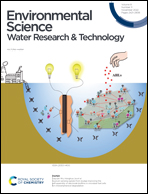Synthesis of a polymeric nanocomposite based on magnetic sepiolite functionalized with an ionic liquid for the adsorption of aromatic pollutants from aqueous solution
Abstract
Recently, ionic liquids (ILs) have received much attention as a green and environmentally friendly medium for various chemical processes. In this study, a magnetic CuFe2O4 nanocomposite was prepared via a co-precipitation method and loaded on sepiolite (SP) activated by hydrochloric acid. Magnetic SP was functionalized with allyl triphenyl phosphonium bromide (ATPPB) as an ionic liquid. The novel polymeric nanocomposite was utilized for the highly efficient removal of polyaromatic micropollutants (fluorene) from contaminated water. The magnetic SP and synthesized adsorbent were characterized using various analytical techniques including FTIR, SEM, EDS, TEM, TGA, DSC, and VSM. The results showed that the magnetic sepiolite@CuFe2O4@ATPPB nanocomposite displayed the highly efficient removal of fluorene from water. This is due to the modification of magnetic SP by ATPPB which can improve the thermal stability and hydrophobic nature of the adsorbent surface and the occurrence of π–π interaction between the adsorbent and adsorbate. The optimum adsorption was observed at pH 8.0, 5 mg L−1 concentration, and 30 min contact time with a 20 mg adsorbent dosage corresponding to a maximum removal rate of 92%. The adsorption isotherms and kinetics were well fitted by the Freundlich and pseudo-second-order models and also the adsorption process was controlled by intra-particle diffusion.



 Please wait while we load your content...
Please wait while we load your content...